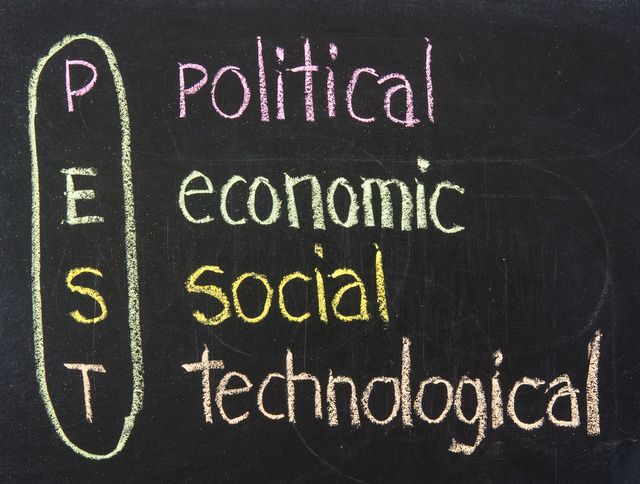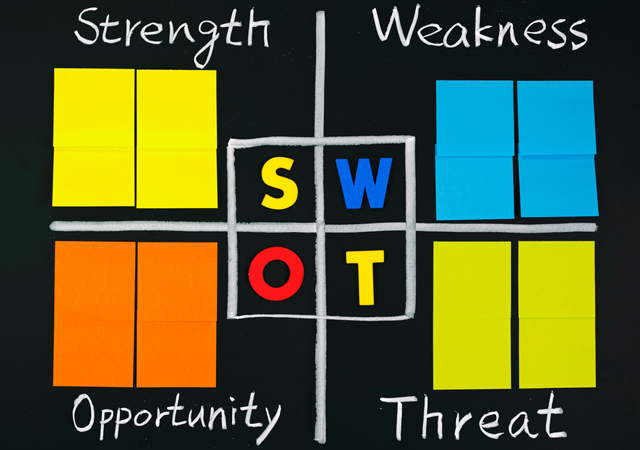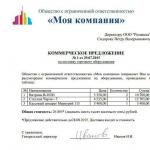How to write a business plan? Part II: Studying the market and competitors
How do you always want to start your own business faster, waving your hand at such a tedious preparatory stage as writing a business plan. We strongly discourage you from doing this. It just seems to you that there is a clear understanding in your head of how to organize the work of the company. But when you start writing everything down on paper, you will realize how many important points you missed.
You can write a business plan. And our articles will help. In we talked about how to describe your company. In this article, we will tell you how to conduct a competitive analysis, draw up marketing and production plans.
Competitive Analysis
No matter how brave you are, you can’t dive into an unfamiliar river upside down. Before opening your own business, you need to collect as much information as possible about the market you are going to occupy, analyze the main trends in the industry and assess the prospects for its development.
Industry and market research
Although the concepts of "industry" and "market" at first glance are similar, there is a difference between them. A market is a collection of consumers, and an industry is a collection of producers.
How detailed the research will be depends on what kind of business you are starting. If you are going to sell jewelry in a small city, then it is not necessary to conduct a study of the state of the All-Russian and world market. But it may happen that by conducting a more global study, you will see new interesting development perspectives. However, always try to objectively assess the situation, because a business plan is not a wishlist, but an extremely practical document.
First of all, you need to know the following about your industry and market segment:
- What market are you going to enter with your products: regional, national or international.
- The level of the industry today and development trends.
- Dynamics of prices and sales over the past few years and forecasts for the next 5 years.
Information sources about the market:
- Internet (specialized resources, forums, social networks).
- Polls in social networks and forums.
- Interviews with employees of the company. Successful sales managers know a lot about the market situation.
- Interviews with representatives of the target audience.
- Personal observation. If the industry is new and there are no statistical data on it yet in authoritative sources, then you can independently conduct a study and make forecasts.
Further, to study the market, we suggest that you apply two well-known methods: PEST analysis (or STEP analysis) and Porter's five forces analysis.

PEST analysis:
- political factors. How does the political situation in the country (world) affect the development of your industry?
- economic factors. How does the economic situation in the country (world) affect the development of your industry?
- social factors. How do social factors influence the development of your industry? Factors: demographics, changes in the level and style of life, attitudes towards religion, attitudes towards the media, consumer sentiment.
- technological factors. How do technological factors such as new products, technology development affect your industry?

Porter's Five Forces Analysis:
- Analysis of the threat of the emergence of substitute products.
What is the likelihood that the introduction of a new product or service will force you out of the market or significantly reduce your profits?
- Analysis of the threat of the emergence of new players.
If your chosen industry is constantly attracting many new entrepreneurs, then you need to think about how you will maintain your position. An industry that is difficult to penetrate is already your competitive advantage.
- Analysis of the market power of suppliers.
How big is it? How will your company's operations be affected, for example, by setting too high prices for necessary components and raw materials?
- Analysis of market power of consumers.
How consumers can influence the company's activities and what is their sensitivity to changes in prices for products or services.
- Analysis of the level of competition.
This is a defining factor for many industries. Who are your competitors? What competitive methods do they use? How much money is spent on advertising? What are the distinguishing features of competitors?
Competitors
We have already touched on the topic of competition in a previous analysis. In this subsection, you need to write down a few bright competitors and briefly describe them. It is worth considering not only direct competitors - companies that are in the same niche with you in terms of products, turnover and prices, but also the "monsters" of your field. For example, if you decide to go into online trading, remember that there is Amazon.
What you need to know about each competitor:
- annual profit;
- market share;
- clear competitive advantage.

For more information, you can use the SWOT analysis:
- strengths- force. What is their strength? Technology, brand, people, application of the concept of lean manufacturing?
- Weakness- weakness. What is their weakness? Weak management? Bad customer service?
- Opportunities- opportunities. What external probable factors exist that provide competitors with additional opportunities?
- Threats- Threats. What external probable factors exist that can hinder competitors?
And finally, when you have a complete picture of the market and your competitive environment, you need to understand what is the value of your company? How are you different from the rest? What is your competitive advantage?
- Your prices are lower than those of your competitors.
- Your product or service is something radically and for the better different from similar ones.
- Niche. You have occupied a very narrow segment of the market. Perhaps with the prospect of its further expansion.
- You offer a new product or service for which there is already a need.
- Your product or service is much better in quality than similar ones.
- You offer the possibility of personalizing the product (tailoring shoes to individual measurements, for example).
- Your product has a spectacular design.
- You reduce the risks for buyers. For example, you can return an item to your online store for free.
- It is more convenient to buy from you (delivery is faster and cheaper, excellent support service).
- You have made the usual thing more simple and accessible.
You have completed the most global part of the business plan - research. Now, based on the information you have, you can move on to the sections that describe exactly how your business will develop.

Drawing up a business plan
Marketing plan
Let's get to know our potential customers better. It is necessary to identify the target segment by answering the questions:
- What is the age of my clients?
- Where do they live?
- What is their level of education?
- How many such people are there in the city/country?
- What do they have in common in behavior?
- How do they spend their free time?
- Where do they work?
- What technologies are used?
- What nationality are my clients?
- How much do they earn?
- Where are they usually invited to work?
- What are their values, views on the world, opinion?
You will build your marketing campaign based on this data. With it, you need to guide the client along a path consisting of 5 steps:
- Awareness - customers know about your existence, but do not know what exactly you are selling.
- Interest – Customers have heard of you, seen you, and are curious about what you have to offer.
- Evaluation - the client decides whether to give you a chance.
- Trial - the customer makes a trial purchase.
- Acceptance – The customer liked what you have to offer and will now shop regularly.
- What channels will you use to increase brand awareness: Internet, television, radio, print magazines and newspapers, outdoor advertising, flyers?
- What other way can you get attention?
- What will be your PR strategy? How will you get customers interested in your product?
At the trial purchase stage, it is important to attract a customer with a quality product and, of course, first-class service:
- How will you handle sales and shipping?
- How can buyers pay for the goods?
- How can the product be returned? Will you offer guarantees? Which?
- Will you provide any customer service after the purchase?
After describing the “Marketing Plan” section, you are probably even more imbued with your ideas. And now we can proceed to one of the most practical sections.
Production plan
The production plan explains how the management of the company will be organized, what resources are needed at the start of the business and which need to be regularly renewed. How will the path of the goods be built from manufacture or purchase to receipt by the buyer.
Main questions:
- Do you need suppliers, and if so, who exactly?
- Will you rent an office or will you initially work from home?
- Do you need employees now and how much? What duties will they perform? Maybe employees will be needed in a month or six months?
- What equipment and furniture do you need? Consider everything from computers to office chairs.
- How will the product or service be delivered to the client: does he have to come to the office / store / salon, will you do the delivery yourself or hire a third-party company for this? Do your products require special delivery conditions?
- Do you need a warehouse? Will you buy it, shoot it, or use third party services? Do your products require special storage conditions?
- How will you provide after-sales service? How will the product return process be implemented? How will customer questions and complaints be dealt with? Will you provide long-term after-sales support?
Production process
If your company will be engaged in production, then you need to prepare another important subsection explaining how the production process will take place and answering the following questions:
- How long does it take to produce a unit or batch of products?
- Do you now have all the necessary equipment and resources? If something is missing, when can you buy it? Is it possible to start production now?
- Describe the technological chain. Think about whether you can improve the process or reduce the cost of it?
- What standards will you be guided by in the manufacture of products, how will you check its quality at each stage of production?
- How many products do you need to produce per day, month, year?
- How will you change the product, service or customer service in response to customer feedback and complaints? Will you need to rebuild the technological chain? How will pricing change?
- How will you cope with a large influx of orders? Will it happen by chance or can it be predicted depending on external factors (eg seasonality)?
Financial plan
Each section of the business plan is important, none of them can be neglected. But the financial plan, perhaps, comes first. It is from it that one can judge how long the company will start to make a profit, and also understand whether it is worth attracting investments into it. In addition, a financial plan is necessary to manage the current financial activities of the organization.
The financial plan may consist of different documents, depending on the type and size of the enterprise. Small businesses need three:
- Budget
The document describes all initial investments and estimated monthly expenses and income. Roughly speaking, from the budget you will see exactly how much you need to invest in the business and what income you can count on.
Initial investment include all one-time expenses: the purchase of equipment, the creation of a website, the registration of an individual entrepreneur, and others.
Monthly expenses- this is the payment of raw materials for the production of products or goods for resale, salaries to employees, rent, utility costs, taxes ...
Monthly income- this is all that you earn after the sale of goods / the provision of services for a month.
Subtracting expenses from income, we get profit. We divide the initial investment by the profit, we get the number of months for which these investments will pay off.
- Profits and Losses Report
Based on the “Budget” data, we calculate the expenses and revenue for the year (we multiply the expenses by 12, and the revenue by 11 months, since we can only establish sales in the second month) and calculate the profit. Initial investments are also taken into account here (no need to multiply, they are one-time). As a result, we will get a forecast of annual profit and we will be able to understand whether the volumes of future business are sufficient.
- Cash flow statement
In the statement of cash flows (DDS), we paint on a monthly basis all payments and cash receipts in the period from 1 to 3 years. As a result, we will see when we reach the break-even point, how long the initial investment will pay off, and predict the results of the work. Monthly data may remain the same or change. For example, you can lay the growth in sales (and raw material costs, respectively).
When you open your business, fill this report with real data every month and adjust the forecast.
Making a business plan
With such a huge amount of information, how it is presented is crucial, so we will talk about the main rules for drawing up a business plan.
- The business plan should not contain "water". Write short and to the point. No more than 15-20 pages. Add any documents that you consider necessary as attachments.
- Maintain the same style of presentation in all sections of the business plan.
- Tailor your business plan to the audience you're presenting it to. For a large investor and a credit manager in a small bank, it is likely to be different. The ideal is to have a layout with basic data that you can adjust a little depending on the situation.
What does a business plan consist of:
- Title page
- Content
- Business plan summary
- General description of the idea and the company
- Competitive Analysis
- Marketing plan
- Production plan
- Financial plan
- Transmittal letter
Let's take a closer look at business plan summary. Despite the fact that we talk about it at the end of the article, this small section is of fundamental importance. Its content determines whether a person will continue to read your business plan or discard it as something not worth attention.
The purpose of the resume is to intrigue, briefly explain that you offer a cool idea that will work and bring money.
- Business concept (what are you doing)
- Goals and vision
- Description of the product and its fundamental difference from competitors
- Description of the target audience
- A short marketing plan (how will you influence the audience)
- The current financial condition of the company
- Projected financial condition of the company
- The amount of money you are asking the investor
- Team (who is in it, why is it important for business)
If you do not present your business plan in person, but send it by mail, be sure to supplement it with a cover letter intended for a specific person from an investment fund or bank.
Before you start writing a business plan, mentally prepare for the fact that this is a long process. You have to extract and analyze a ton of information. But having taken this difficult step, you will go faster further, and the road will become easier and more exciting. We are sure you will succeed. Good luck!
P.S. In we will write a real example of a business plan. Stay tune.
Alina Vashurina is a PR Director at Ecwid. Writes to inspire and educate readers about everything related to e-commerce. She loves to travel and runs marathons.





